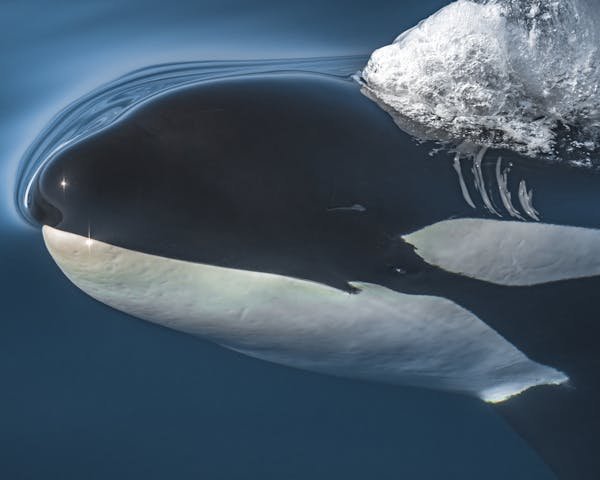The sperm whale (Physeter macrocephalus) is one of the most fascinating creatures in the ocean, renowned for its immense size, intelligence, and exceptional diving capabilities. These deep-diving giants have captivated scientists and marine enthusiasts for centuries, playing a crucial role in the marine ecosystem. From their unique physical adaptations to their extraordinary social behaviors, sperm whales are a testament to the wonders of marine evolution.
The Largest Toothed Predator
Sperm whales hold the title as the largest of all toothed whales, with males reaching up to 60 feet in length and weighing as much as 45 tons. Unlike baleen whales, which filter-feed on small marine organisms, sperm whales are equipped with teeth and primarily hunt large prey, including squid and fish. Their large, block-shaped heads, which make up nearly one-third of their body length, house the largest brain of any animal on Earth. This oversized head also contains the spermaceti organ, a structure filled with a waxy substance that scientists believe plays a role in buoyancy control and echolocation.
Masters of the Deep Dive
One of the most remarkable characteristics of sperm whales is their ability to dive to extreme depths in search of food. Sperm whales are among the deepest-diving mammals on the planet, capable of reaching depths of over 3,000 meters (nearly 10,000 feet). These dives can last up to 90 minutes, although they typically last between 30 to 45 minutes. Their primary prey in these depths includes large squid, including the elusive giant and colossal squid species.
To survive such intense pressures and oxygen deprivation during these deep dives, sperm whales have developed unique adaptations. Their bodies can collapse their lungs to prevent damage, and they have an extraordinary ability to slow their heart rates, conserving oxygen while diving. Additionally, their blood has a higher concentration of myoglobin, a protein that stores oxygen, allowing them to function in low-oxygen environments.
Echolocation and Hunting Strategies
Sperm whales rely heavily on echolocation to navigate the dark depths of the ocean. They produce a series of clicks and listen for the echoes that bounce back from objects, enabling them to locate prey even in pitch-black conditions. These clicks are some of the loudest sounds produced by any animal, capable of being heard over vast distances underwater.
During their deep dives, sperm whales hunt individually, targeting large squid and fish. Once they locate their prey, they use their sharp conical teeth to grasp and subdue it. The battle between sperm whales and giant squids has become the stuff of legend, with scars from squid tentacles often visible on the skin of sperm whales.
Social Structure and Communication
Sperm whales are highly social animals, living in matriarchal groups known as “pods.” These pods usually consist of females and their offspring, while males tend to live more solitary lives, occasionally joining pods during mating season. The social bonds within these pods are strong, and members often cooperate in raising young and defending against predators, such as orcas.
Communication among sperm whales is complex, involving a series of rhythmic clicks known as “codas.” These codas are unique to different pods and may serve as a form of identification, much like a family dialect. Scientists believe that sperm whales use these codas to coordinate movements, socialize, and maintain bonds within their group.
Threats and Conservation
Historically, sperm whales were heavily hunted for their valuable spermaceti oil, which was used in candles, lubricants, and cosmetics. This intense whaling, particularly during the 18th and 19th centuries, led to a significant decline in their population. Fortunately, sperm whales are now protected under international law, and commercial whaling has largely ceased. However, they still face threats from human activities, including ship strikes, entanglement in fishing gear, and the impacts of climate change on their deep-sea habitats.
Pollution, particularly plastic waste, also poses a growing danger. Plastic debris can be ingested by sperm whales, leading to injury or death. Additionally, noise pollution from ships and industrial activities interferes with their echolocation and communication, making it more difficult for them to find food and interact with each other.
Conclusion
Sperm whales are true marvels of the deep ocean. Their incredible diving abilities, sophisticated communication, and tight-knit social structures make them one of the most intriguing and important species in marine ecosystems. As apex predators of the deep, they help regulate the populations of squid and fish, contributing to the balance of oceanic food chains.
While sperm whales have faced significant threats from human activity, ongoing conservation efforts offer hope for the future of these remarkable creatures. Understanding and protecting sperm whales is not only a matter of preserving one of the ocean’s most impressive animals but also ensuring the health and vitality of the marine environment they inhabit.

